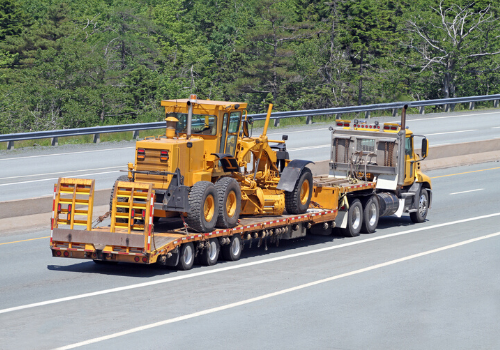By Theo Rennenberg, DLL Group
Construction companies have wrestled with the following question for many years: Does it make more sense to own or lease equipment? Thanks to some newer and more innovative leasing structures, that question is becoming easier to answer.
First let’s review some of the upsides to leasing in general:
- Frees up working capital
- Lowers total cost of ownership
- Allows company to pay for equipment at beginning of lifecycle when most reliable
- Eliminates unpredictable repair costs in latter stages of lifecycle
- Eliminates fear of equipment becoming obsolete
- Eliminates need to dispose of equipment at end of lifecycle
When you look at those upsides, you can see why many companies choose to lease equipment that is used on a frequent basis. Operating hours accumulate rapidly over a short period of just a few years. Maintenance and repair costs start to tick up. Fixed-term leases allow companies to return that equipment at just the right time. Remember, construction companies need equipment they can rely on — especially equipment with high utilization.
Therein lies the challenge, however, with traditional fixed-term leases. Many equipment managers have a difficult time predicting equipment needs because they don’t have accurate utilization data to guide them. They rely on anecdotal evidence or maybe even gut instinct. Doing so opens the door to two potential downsides of traditional fixed-term leases where the monthly payment is based on a certain amount of hours over a certain period of months:
- Equipment is underutilized – monthly payment ends up being too high
- Equipment is overutilized – overtime fees assessed at the end of the term
In either case, the company can end up paying more for the equipment than it had originally planned, which in turn stifles cash flow and erodes project profitability.
Our data shows that 68 percent of leases have underutilized equipment. This is somewhat shocking, but not really surprising because many equipment managers tend to overstate how often equipment is being used. Case in point, just because a piece of equipment is on a jobsite for eight hours doesn’t mean it’s being utilized for eight hours. A good benchmark is 38 percent utilization, which equates to roughly three hours out of an eight hour shift.
Our data also shows that 21 percent of leases have overutilized equipment. This simply comes down to not having a good handle on utilization, which results in poorly structured fixed-term lease agreements.
The good news is that utilization data isn’t that difficult to obtain. Just look at meter readings over the past five years and calculate an annual average. This won’t result in a perfect prediction of equipment utilization, but the prediction will be much more accurate than if just shooting from the hip.
 Usage-Based Leases Help Companies Control Costs
Usage-Based Leases Help Companies Control Costs
The challenge in accurately predicting utilization is why I have become such a proponent of usage-based leases. This type of lease uses operating hours as the primary driver. This relieves an equipment manager’s burden of being spot on with their utilization estimate.
A usage-based lease still has a fixed term. But unlike a traditional fixed-term lease, it doesn’t force the company to estimate operating hours over the term. Rather, it uses the company’s historical minimum usage over a slightly longer term, helping companies to better control their minimum monthly payments. For example, if a company determines that each of its three backhoes puts on roughly 1,000 to 1,200 hours per year, the lease would be based on 1,000 hours per year.
The company is billed based on how many hours have been put on the equipment. This helps with cash flow because the amount the company pays correlates to how much the equipment was used to generate revenue.
Once the equipment reaches its designated number of hours, the lease ends — regardless of how far into the term it is. This helps the company avoid paying overtime charges at the end of the term.
For companies that underutilize the equipment, there is an option to extend the lease at the end of the term. The new payment is at a discount off of the original payment. This helps equipment managers get the desired usage out of an asset, helping them to minimize not only ownership costs, but also operating costs.
Theo Rennenberg presented the education sessions, “How to Apply Leasing Structures to Reduce Ownership Costs” and "Optimizing Fleet and Asset Management with Usage-Based Equipment Financing" at CONEXPO-CON/AGG 2020.
Theo Rennenberg is a Fleet Solutions Account Manager in the Americas Construction, Transportation and Industrial Business Unit of DLL, a provider of equipment financing and fleet management solutions in more than 35 countries. Theo co-developed the usage-based lease product called Lease by the Hour. He is a 36-year veteran of the equipment distribution industry and has specialized in fleet management throughout his career.
Join more than 40,000 industry peers who receive construction industry news and trends each week. Subscribe to CONEXPO-CON/AGG 365.









